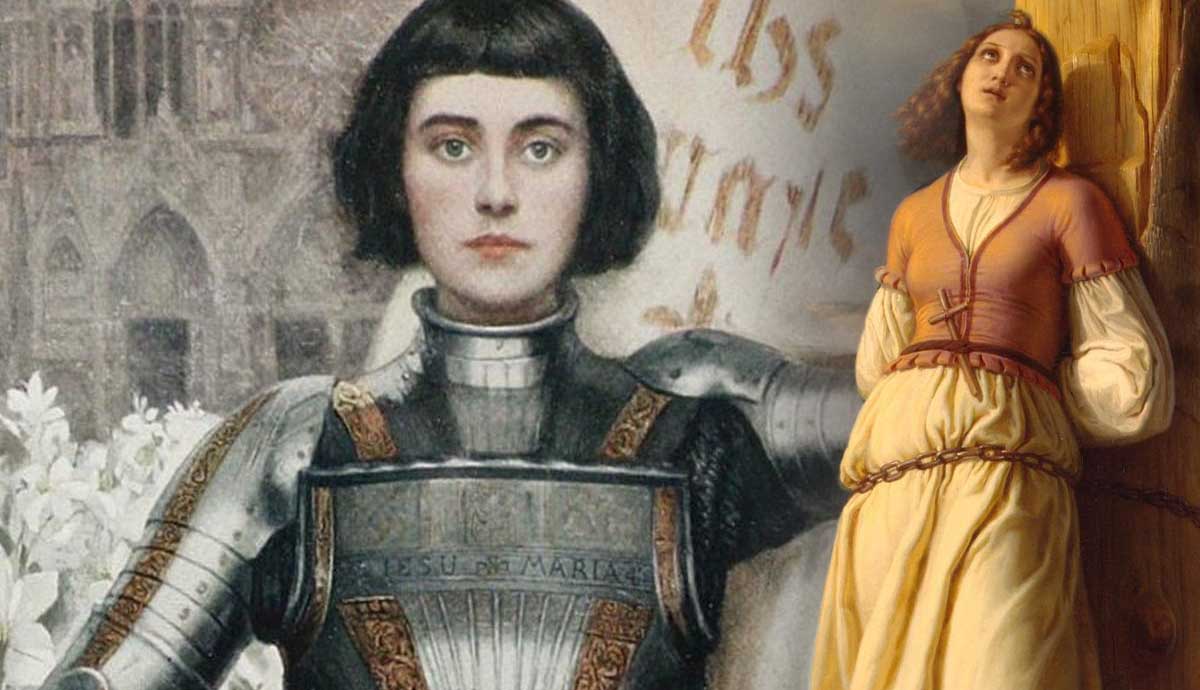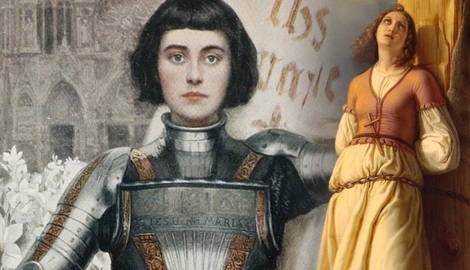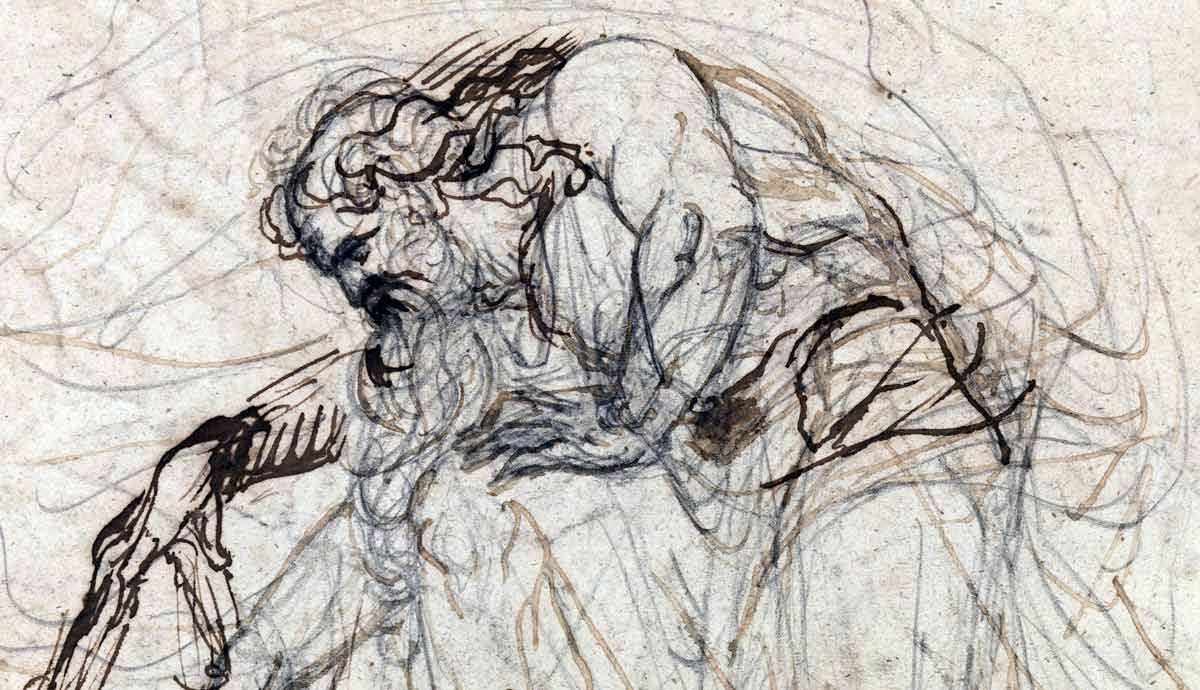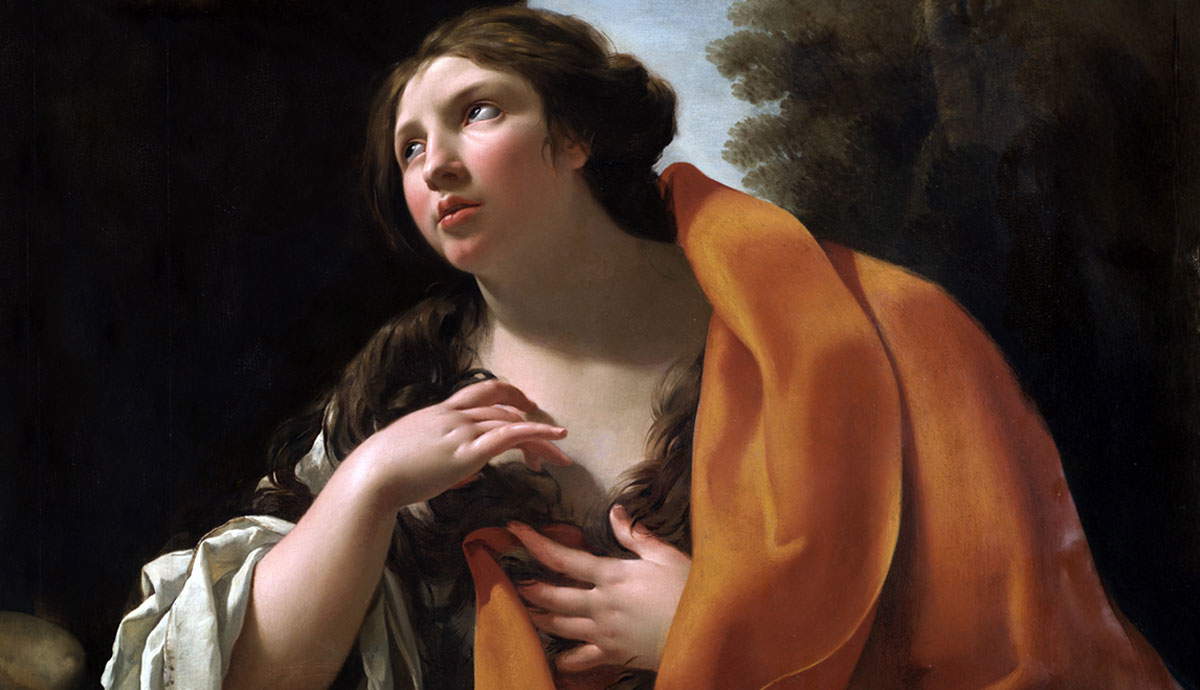
Joan of Arc might be one of the most famous heroines in history, the much-publicized martyr, who was burned at the stake by the Catholic Church. She persuaded prince Charles of Valois to let her valiantly lead a French army to Orleans in 1429, where she oversaw a triumphant victory against England at the mere age of 19, despite having had no military training. Although her victory led Charles to be crowned King Charles VII, she was subsequently captured by rivals, who accused her of heresy and had her brutally executed. In 1920, she became canonized as the Patron Saint of France. We take a closer look at some of the most compelling facts surrounding the life of this remarkable and formidable woman.
1. She Had Several Different Names

Joan of Arc was associated with several names during her lifetime, and her actual birth name remains something of a mystery. In the town of Domremy, where she was born, she was known as Jehanette, while other records suggest her name changed to Jehanne d’Arc, Jehanne Tarc, Jehanne Romee and Jehanne de Vouthon. In the build up to her trial, she noted her name as ‘Jehanne la Pucelle’, meaning ‘Joan the maid’, suggesting she may not have known her last name. The name we now know her for – Joan d’Arc, or Joan of Arc, is most likely a guess for what her father’s last name might have been.
2. Joan of Arc Might Have Had Mental Health Issues

Throughout her short life Joan of Arc made some quite spectacular claims about the purpose of her life. She claimed that she had been receiving messages from the archangels St Michael, St Catherine of Alexandria and St Margaret of Antioch since the tender age of 13 that her life’s mission was to assist Charles VII in taking up the throne. In more recent times, many have speculated what might have caused her to have such unbelievable visions, even if they did turn out to be true. Some believe she had schizophrenia or bipolar disorder, or perhaps even early onset dementia following a bout of bovine tuberculosis.
3. Joan of Arc Had a Distinctive Look

Joan of Arc was a vanguard rebel who styled herself unlike any other woman of her era. She wore men’s clothing which allowed her to rule an army of men in battle, and chopped her hair short into the trademark ‘bob’ that we now associate with French women. Some even mistook her for a man, which no doubt led her to be taken more seriously as a leader. In 1909, renowned hairdresser Monsieur Antoine even claimed Joan of Arc was his greatest inspiration when he began cutting women’s hair into cropped bob styles.
4. She Nearly Died During Battle

While Joan of Arc was a strategic battle planner, she didn’t actually take part in any conflicts, instead waving a triumphant banner while manning the troops. But this did not make her immune to sustaining injuries of her own. During one eventful conflict in the trenches, she was struck by an arrow, which pierced her between the neck and the shoulder. Ever the fearless leader, she resumed her duties during the final stages of the battle, witnessing the moment when the English finally retreated, leaving the French victorious.
5. She Was Tried for Multiple Crimes

Following her capture by the English, Joan of Arc was charged with around 70 different crimes, including theft, witchcraft and wearing men’s clothes. The number of crimes was later lowered to around 12, the main one being ‘heresy’, for which she was sentenced to death by being burned at the stake. In 1456, Pope Callixtus III opened a new trial and the court eventually exonerated Joan of Arc, clearing her name, and raising her status as a historical and heroic martyr.










